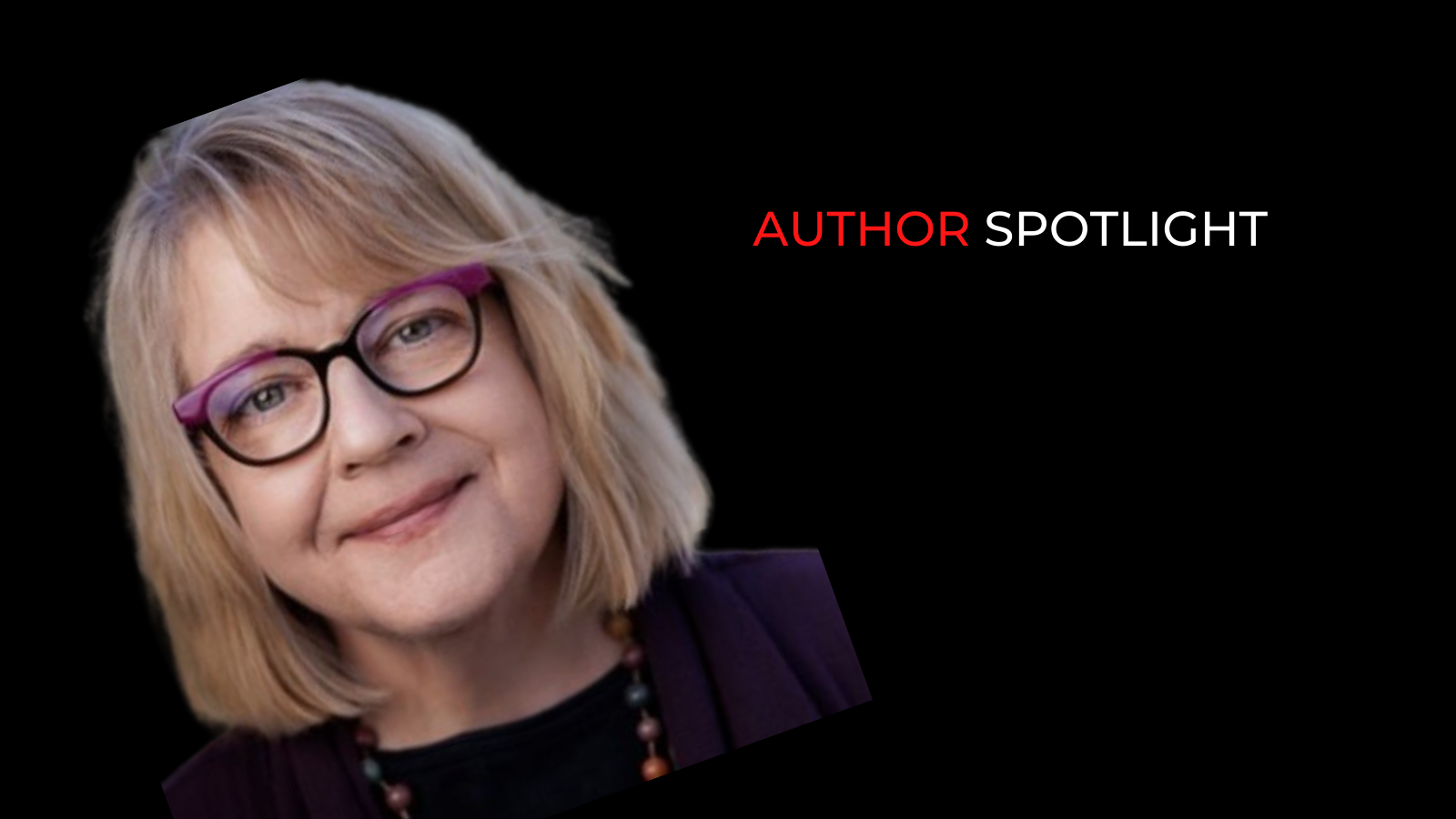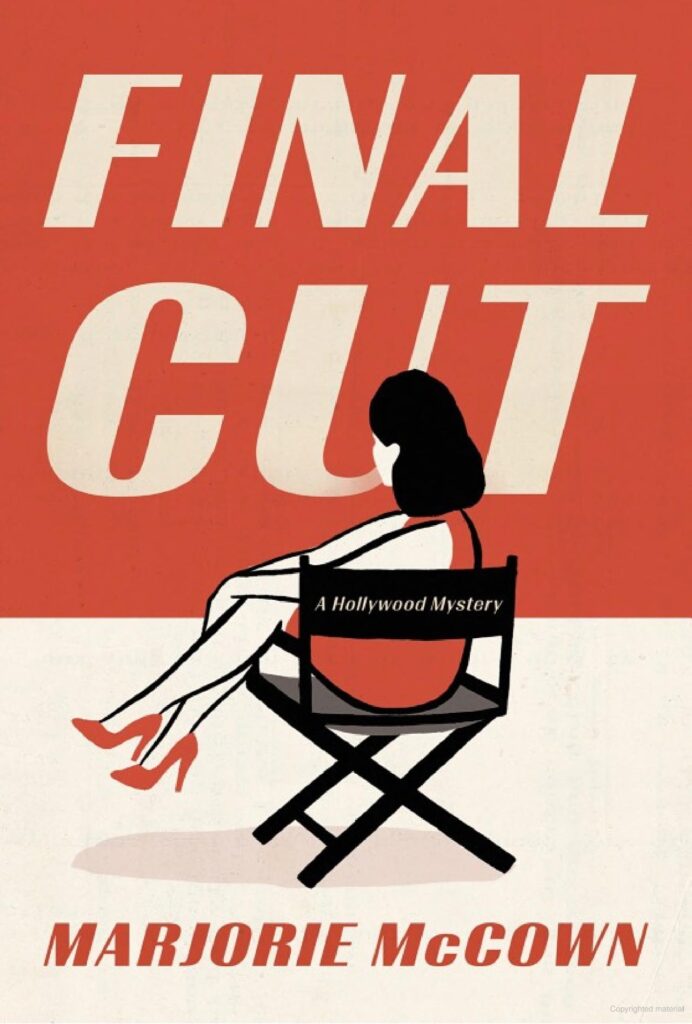For this month’s Author Spotlight, Robyn Walton spoke to US crime writer, Marjorie McCown, about her debut novel, Final Cut (Crooked Lane Books, 2023), for Sisters in Crime Australia.
Congratulations on the publication of your first crime novel. I see from your bio that you belong to Sisters in Crime America. How are you finding being a writer after working for three decades in costuming for screen and stage?
Thank you so much for your kind words and for giving me this opportunity to reach a new community of readers, Robyn.
In many ways, the shift from costumes to writing has felt like a natural transition for me. I think part of that is because costume design is about storytelling — that’s what makes it different from fashion design, which is about satisfying the tastes of the marketplace. The goal of costume design is to use clothing to help tell a story about a particular set of characters in a particular situation at a particular point in time. I’m quite certain that was one of the reasons I was drawn to the profession in the first place.
What’s taken me by surprise are the ways I’ve come to understand that my years working in film, particularly, have influenced my writing. Breaking down the screenplays to chart the costume changes and then watching those movies being created shot-by-shot on set taught me a lot about story structure. Now I look at my writing cinematically. I outline my books before I begin writing them, but I use that outline almost like the daily shot list for camera setups on a movie. And the whole time I’m writing, I have the movie version playing in my head.
Given your background, it’s understandable you’d write a mystery story that involves costumes. You could choose from any number of locations and time periods. What attracted you to the making of action movies in LA in the present day?
I chose a superhero movie in production as the setting for the book quite deliberately and for a couple of reasons.
Since the first X-Men movie directed by Bryan Singer was released in 2000, a steady stream of super-hero movies — Spider Man, Iron Man, The Incredible Hulk, Captain America, and all their inevitable sequels and spinoffs — has become the dominant genre of A-list feature films produced by Hollywood. And as someone who dearly loved working on big period movies such as Forrest Gump, Apollo 13, and The Curious Case of Benjamin Button earlier in my career, I wasn’t as fond of working on the comic book extravaganzas. So, choosing that setting gave me a chance to whine a bit about the prevalence of spandex-clad characters in most of the movies I worked on during the last decade of my Hollywood costume career.
But on the plus side, at least in terms of the storyline for the book, there’s always a lot of money being spent on those movies. They’re huge productions with big casts, crews, and a lot of technical bells and whistles, so lots of potential action and drama behind the scenes.
Your book’s movie features 15 superheroes. And the sleazy producer-director hires 50 ‘babes’ who won’t even be extras; they’re just for his private pleasure. It’s funny, but are you really exaggerating Hollywood’s excesses a great deal?
When I worked on X-Men Days of Future Past, we had 13 superheroes to costume, so I figured I wasn’t overreaching by much to push the number to 15 in the book. As for Marcus Pray, the sleazy producer-director, he is a composite inspired by real people I’ve encountered in my film career, which is not to say that all of the most powerful people working in the movie business are as arrogant and abusive as Marcus Pray. Far from it. But that character is emblematic of a problem with the fundamental culture of the film industry that has been slow to evolve with our changing times.
The sequence in the book to which you’re referring came from an experience I actually had working on a film. We were shooting a beach scene, and the director threw a fit when he saw our female background players dressed in swimwear. (They were all perfectly lovely, by the way.) He demanded that Victoria’s Secret models be called in immediately to replace the women he deemed “not hot enough”. Most of the replacement models did appear on camera in that movie, but a smaller group of those women primarily functioned on set as personal companions and eye candy for the director.
The reason I included that scene was to illustrate the imbalance of power within the film industry that provides the opportunity for the Harvey Weinsteins among us to abuse their positions of influence largely unchecked. Each movie is a short-term professional microcosm of freelance employees unencumbered by HR oversight. So, people who are on the lower rungs of power literally risk their jobs as well as potential long-term damage to their careers if they challenge one of the big shots who’s behaving badly. The shame of it is that, despite recent reforms encouraged by initiatives such as #MeToo, there are still too many people who are too much like Marcus Pray working in the movie industry.
You mention real-life actors from several countries, including Australia. Thinking about the international aspect of commercial entertainment, do you have any thoughts on non-US nations’ film and costume industries?
I think Australia and New Zealand have one of the richest pools of cinematic talent and expertise going.
Amongst the filmmakers, there are the great Peter Weir, one of my all-time favorite directors from any country, George Miller, Jane Campion, Bruce Beresford, Gillian Armstrong, Taika Waititi, Peter Jackson, not to mention the film-making juggernaut of a team, Baz Luhrmann and Catherine Martin, who are some of the brightest stars in the world of contemporary film.
With regard to costume design, Oscar winners Lizzy Gardiner, Tim Chappel, Ngila Dickson, Angus Strathie, Richard Taylor, and Catherine Martin (who’s won not only for costume design but also production design and as a producer) are all from Australia/New Zealand.
Plus, you have the now-legendary Weta Workshop in Wellington creating some of the most sophisticated and memorable production support and design work in film – everything from sets, costumes, armour, weapons, specialty costumes, and creatures. Richard Taylor, one of its founders, is a five-time Oscar winner in costume design, make-up, and visual effects. If I were starting out today in film, I believe I’d just as soon be working in Wellywood as in Hollywood.
Finally, your protagonist, Joey. I liked her. Are we likely to meet her again? If so, will she age or stay forever young?
I’m delighted that you liked Joey and thank you for saying so! I’m also very happy to tell you that the second Joey Jessop Hollywood mystery, titled Starstruck, will be published by Crooked Lane Books in May 2024.
Starstruck follows Joey onto another movie job that takes place several months after the events that occurred in Final Cut. Although Joey is still grappling with the emotional fallout from that earlier ordeal, she’s grateful to be back on the job, doing the work that she loves. The movie she’s working on is titled The Golden Age and is set in 1930s Hollywood during that very glamorous era of American film, a dream job for anyone who loves period costumes as much as Joey does.
Robyn, as to your question about whether Joey will age or stay forever young, only part of that decision lies with me. The readers who buy my books and my publisher also get a say in the outcome. If I’m lucky enough to move forward with the series beyond these first two books, Joey will age naturally and hopefully continue to grow as a character and as a human being.
Thanks for your responses. Marjorie.
For more info, go here.

